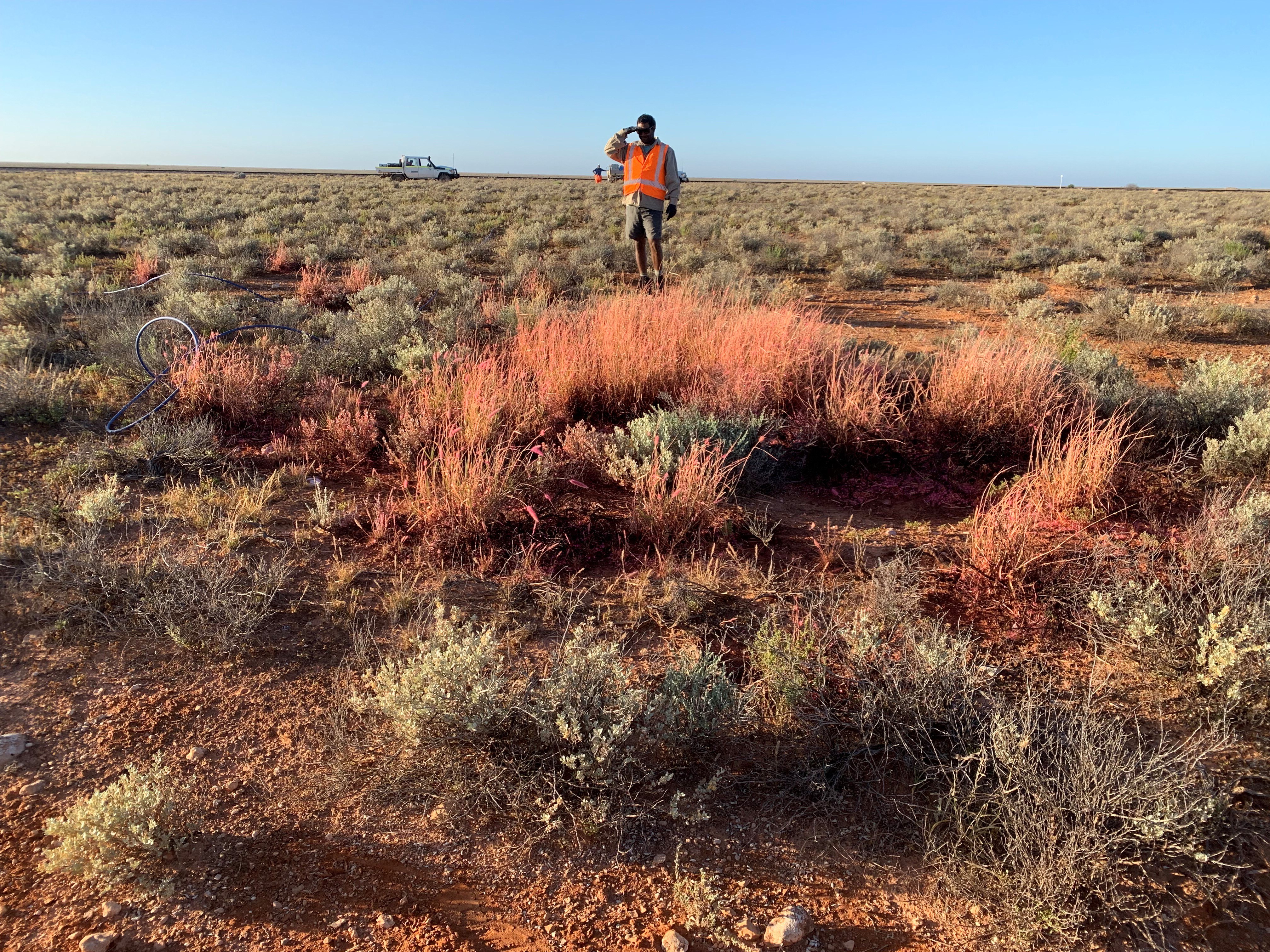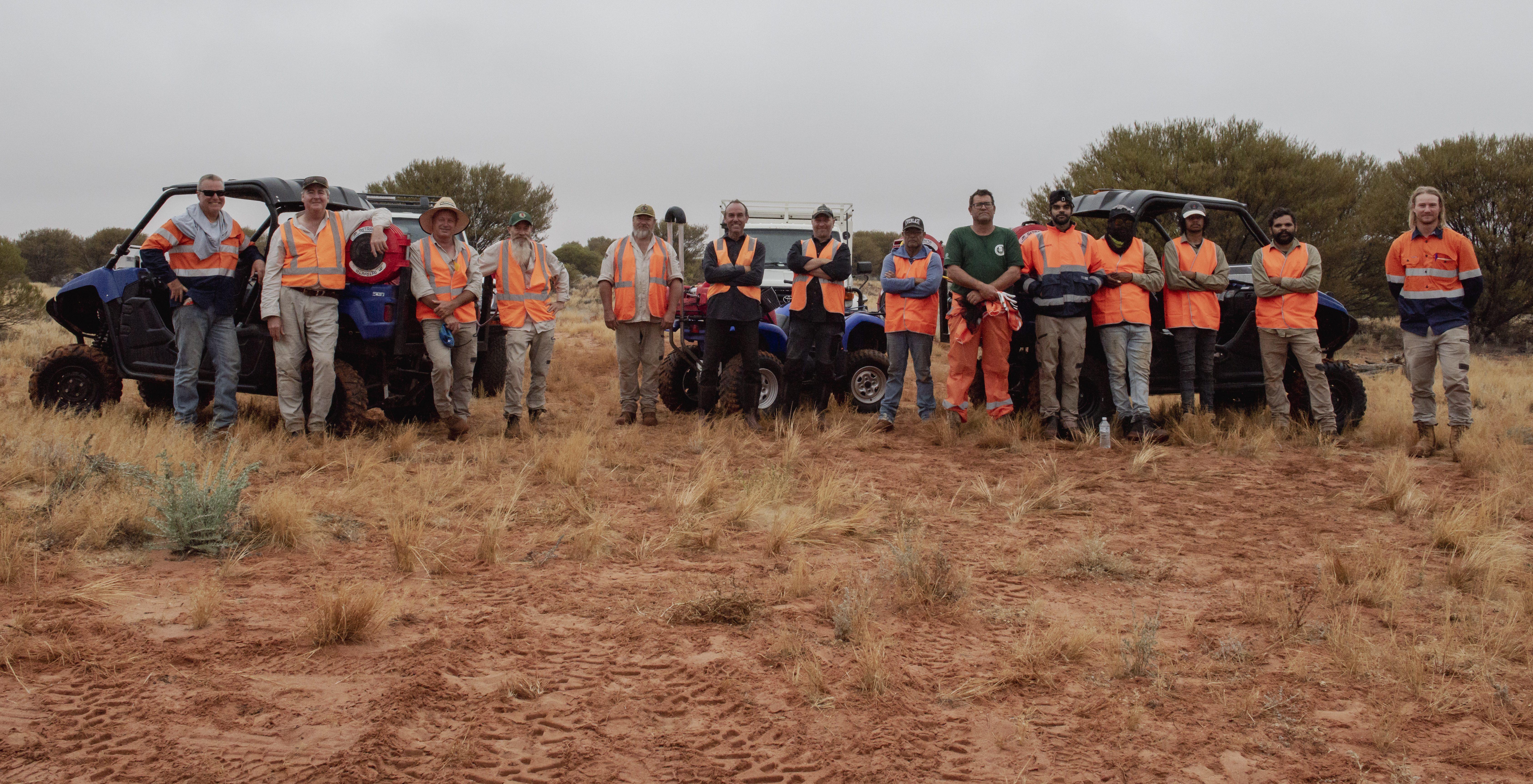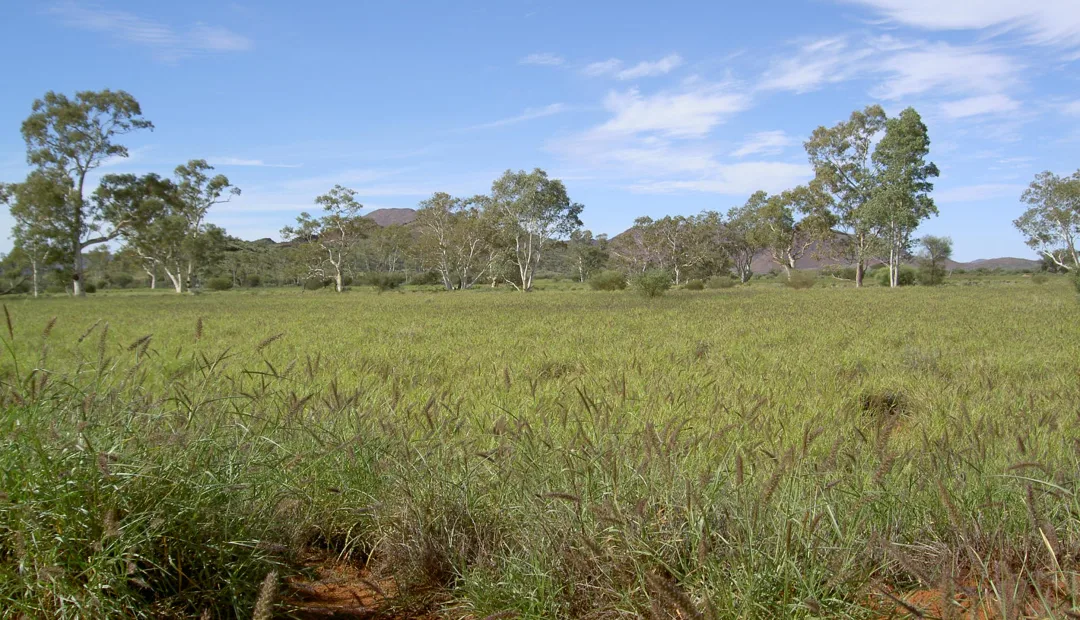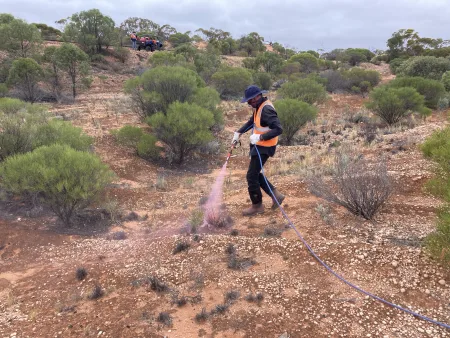Published:
Author:

Buffel grass (Cenchrus ciliaris and Cenchrus pennisetiformis) is a long-lived introduced tussock grass that poses an existential threat to arid ecosystems across Australia.
Known in Pitjantjatjara as mamu tjanpi or tjanpi kura – devil grass or bad grass – buffel grass is now recognised as one of the worst environmental threats in Australia’s arid rangelands.
It is fast-growing, outcompetes native grasses and shrubs, and makes it difficult for animals and people to move across the landscape. It burns hotter and more frequently than native vegetation, killing larger shrubs and trees, and regenerates more quickly after fire events, transforming diverse healthy landscapes into grasslands, creating a monoculture that decimates natural ecosystems, damages Anangu cultural sites and significantly increases fire risk for communities.

Buffel grass is a declared weed in South Australia, but not in any other state or territory.
Buffel grass is identified as a key threatening process in threatened species recovery plans and poses a significant risk to critically endangered species, including the warru (black-flanked rock-wallaby), malleefowl and sandhill dunnart amongst others.
The threat of buffel grass is being amplified by climate change.
Buffel grass is well suited to the arid and semi-arid climate of Australia and both climate extremes present their own challenges. El Nino events result in a reduced control window and rapid drying out of buffel grass following rain, presenting a significant risk of widespread, hotter than average fires impacting both natural ecosystems, communities and critical infrastructure. Conversely, La Nina events present ideal growing conditions resulting in multiple germination events, extensive seed and highly flammable biomass production and a greater likelihood of both local and long-distance dispersal following high rainfall events.
Leaving buffel grass to spread unchecked is simply not an option. The grass chokes out entire ecosystems, outcompeting native grasses, shrubs and the animal species that depend on them. The ongoing health of arid landscapes depends on minimising the impacts of buffel grass.
We the First Nations people of the desert did not bring Buffel grass to this land. But it is here, and it is killing our country and threatening our communities and culture.
We are calling on governments at all levels to recognise the impacts and the threats that Buffel grass has on we, the First Nations people of Australia.
From the Desert IPA Rangers Statement on Buffel Grass 2021 (The Umuwa Statement)

Efforts to date have shown that buffel grass can be managed if action is taken before infestations become endemic. However, work is focused on a relatively small area and buffel grass continues to make inroads into arid and semi-arid ecosystems across the Australian rangelands. There is a real risk that buffel grass will contribute to further species extinctions and loss of critical habitat for a range of iconic flora and fauna across the arid and semi-arid rangelands.
Coordinated cross-jurisdictional surveillance and control focusing on high-risk pathways such as road and rail corridors, outback communities and sites of cultural and environmental significance is critical to managing the devastating impacts of this priority weed.
Targeted investment and research into landscape-scale surveillance and control tools and technologies are critical to increase the efficiency of efforts and inform prioritisation of control activities.
State and federal recognition and investment in buffel grass management are critical to managing the significant threat to biodiversity, culture and the safety of Australia’s rangelands.
Buffel grass poses a major threat to the Great Victoria Desert and no single group can succeed alone.
The Alinytjara Wilurara Landscape Board is leading a multi-agency taskforce against buffel grass in the southern Great Victoria Desert, partnering with neighbouring landscape boards South Australian Arid Lands, Eyre Peninsula, and Northern and Yorke. We’re grateful for the support of Far West Coast Aboriginal Corporation Rangers, Oak Valley Rangers, Spinifex Land Management, APY Land Management, Yalata Rangers, National Parks Rangers and local contractors.

The Alinytjara Wilurara Landscape Board carries out this work with funding from the Australian Government’s National Landcare Program and the South Australian Government’s Landscape Priorities Fund. Further funding is provided by the South Australian Department for Infrastructure and Transport, BHP, and the Australian Rail Track Corporation.





